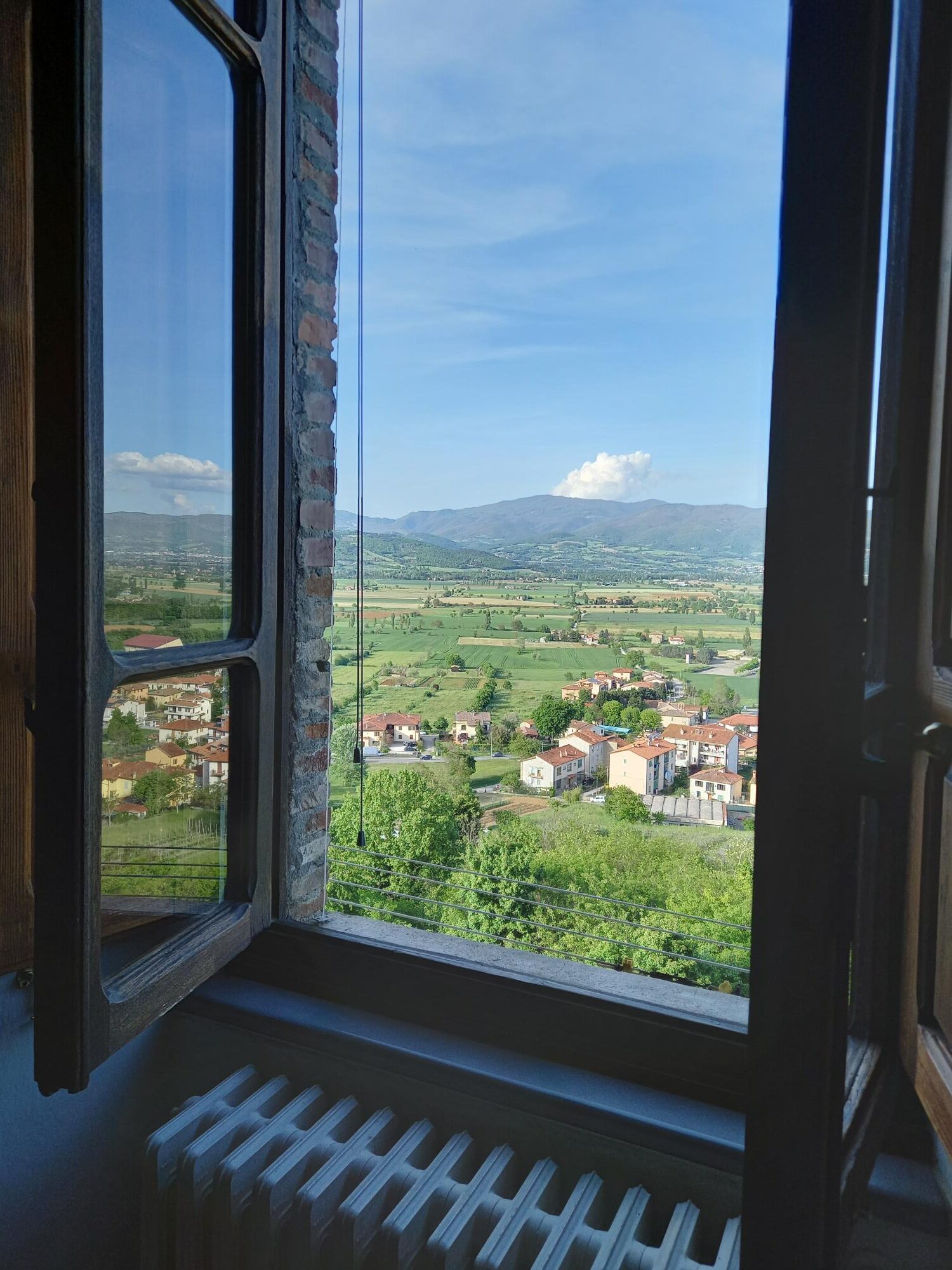
On my return to Anghiari after 4 years I have once again received a very warm welcome. Maybe even more heartfelt this time, after these years of covid. I run into acquaintances and friends in the street, in the piazza, in shops, in bars, and am warmly greeted with big smiles, and, frequently, hugs and kisses. Milva, in the alimentari, looked as if she’d seen an apparition when I walked in – she was so excited to see me. And to tell me that Lorenzo, her son, smiling next to her, was getting married in July. They had thought of me in those years of absence, she said, wondered how I was doing. Well, now, here I am back in the life of this place. And it feels like a home coming.
I took this photo on arrival – the view over the Tiber valley from my bedroom window. This time I am staying in a different place, located in the medieval walls of the town, with a view over the valley from every room. It has a wonderful address: via delle mura di sopra (‘street of the upper walls’). There is also a via delle mura di sotto. Once again, on arrival, I am struck by the distinctive light, colours, smells, sounds of Tuscan spring. In this photo you can get a sense of the soft light of spring here. When I open the windows, I am greeted by the smell of spring that I recall from my first stay in Anghiari, 20 years ago. There is a constant sound of birds, Italian spring birds, and, early in the morning, I hear hens and roosters in the valley. Every morning, the bells ring in La Badia, the 12th century church located right above my house. And, in the evening, they ring in the 13th century church, Santo Stefano, at the bottom of the hill.
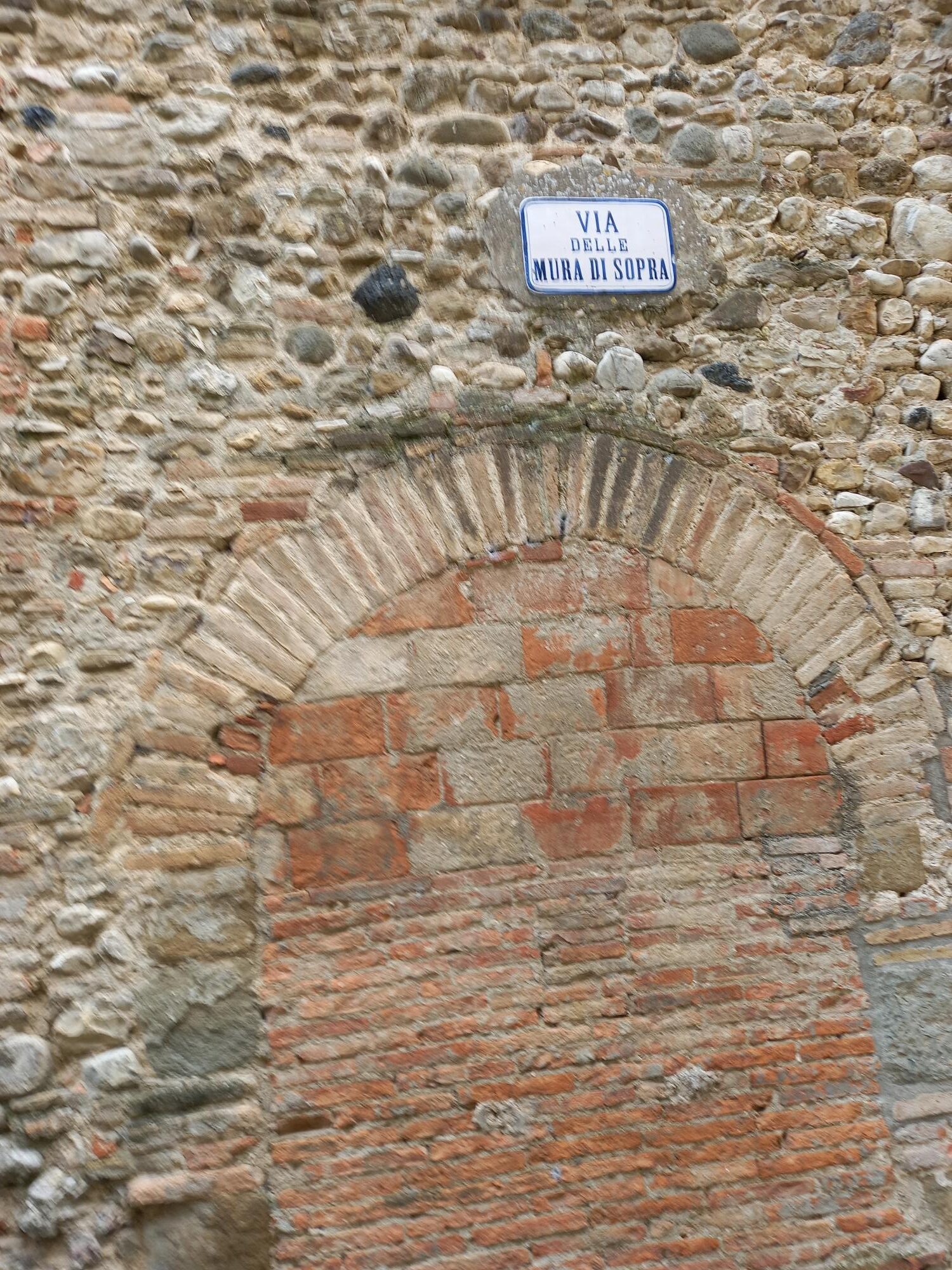
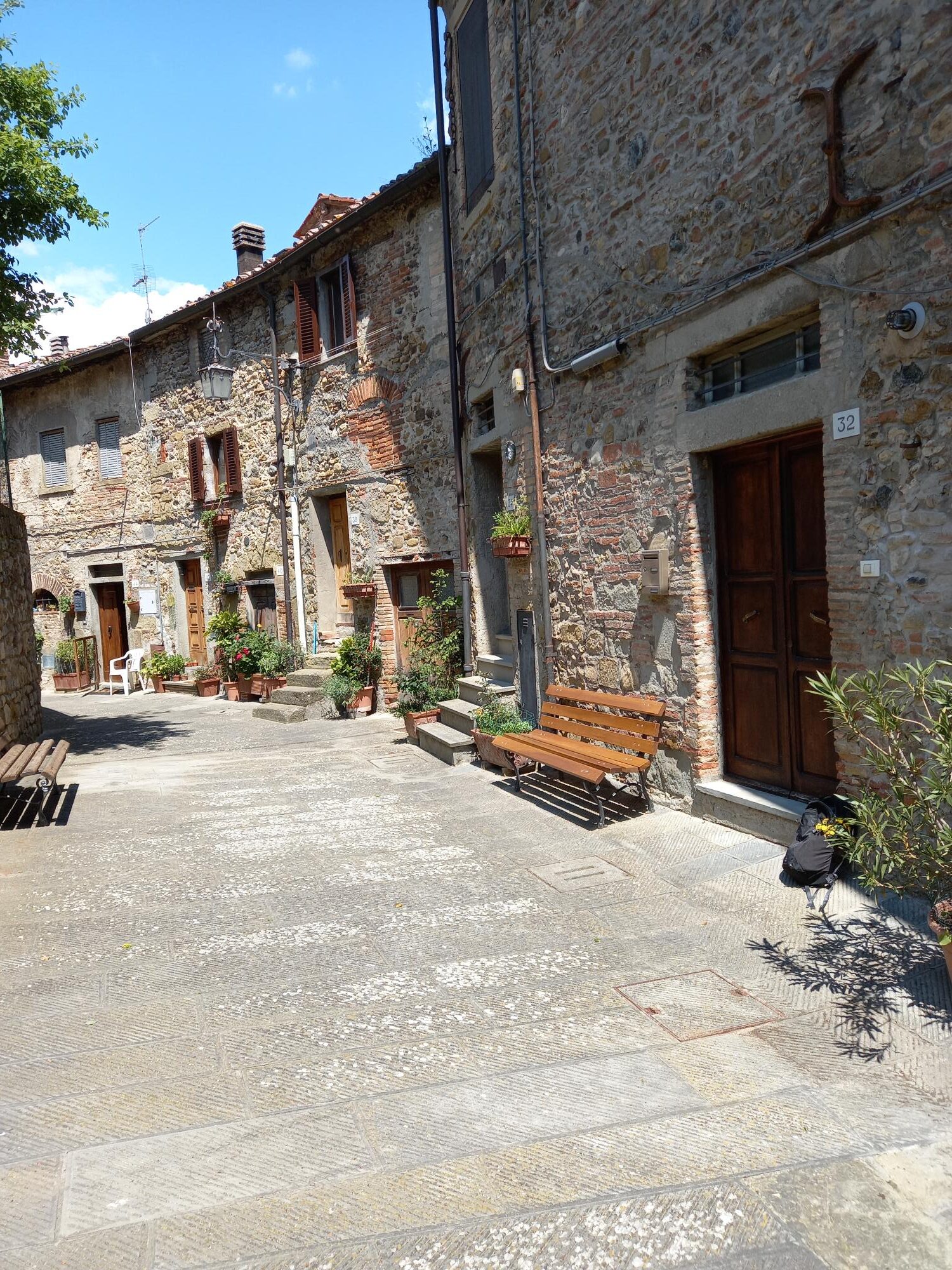
I am back into the daily morning routine that I have always found so sustaining here. As I have said before, one of the things that I love about this place is the continuity in the rhythms of everyday life. However, after a few days, I sense a further decline of everyday community life in the centre of Anghiari. Yes, despite extended periods of closure during covid, most of the shops are still here, with the same people in them, but somehow they all seem to be emptier, quieter, as are the bars, and the Wednesday market. So, when people say that it is ‘tranquillo’, I detect a slightly different meaning to the usual ‘peaceful, calm’. In the town centre, I also notice a predominance of older people and tourists. I ask the ever helpful and courteous Angela in the newsagency about this. (Incidentally, when I first walked into her shop, Angela asked if it was OK for us to hug.) She confirms my observation, saying that shops, including hers, are indeed much emptier, and that, in particular, there are far fewer middle-aged customers. She puts this down to a change in parking arrangements that makes it more difficult for people to stop off and drop into shops. This is such a pity, she says, because everyday face-to-face encounters in shops, ‘like this one, when we are looking into each other’s eyes’, are vital to the life of the community.
Angela gives the example of the pharmacist in piazza Garibaldi who has experienced a noticeable decline in customers, but, whose sister, who runs a pharmacy in the modern settlement at the bottom of the hill, is doing well. I’ve noticed a change, for example, the panetteria, Forno Bindi, with the same lovely young couple running it and the same warm inviting smell of fresh bread and pastries – there is always at least one person in there, but, in the past, you would have had to patiently wait your turn at this time of the morning. Clearly, there has been a hastening of the long-term processes at work across Italy in small towns like Anghiari, particularly those located on hilltops – the aging and depopulation of old town centres with young people moving to more accessible places, and the predominance of the car and the supermarket. All of which has led to a loss of street life.
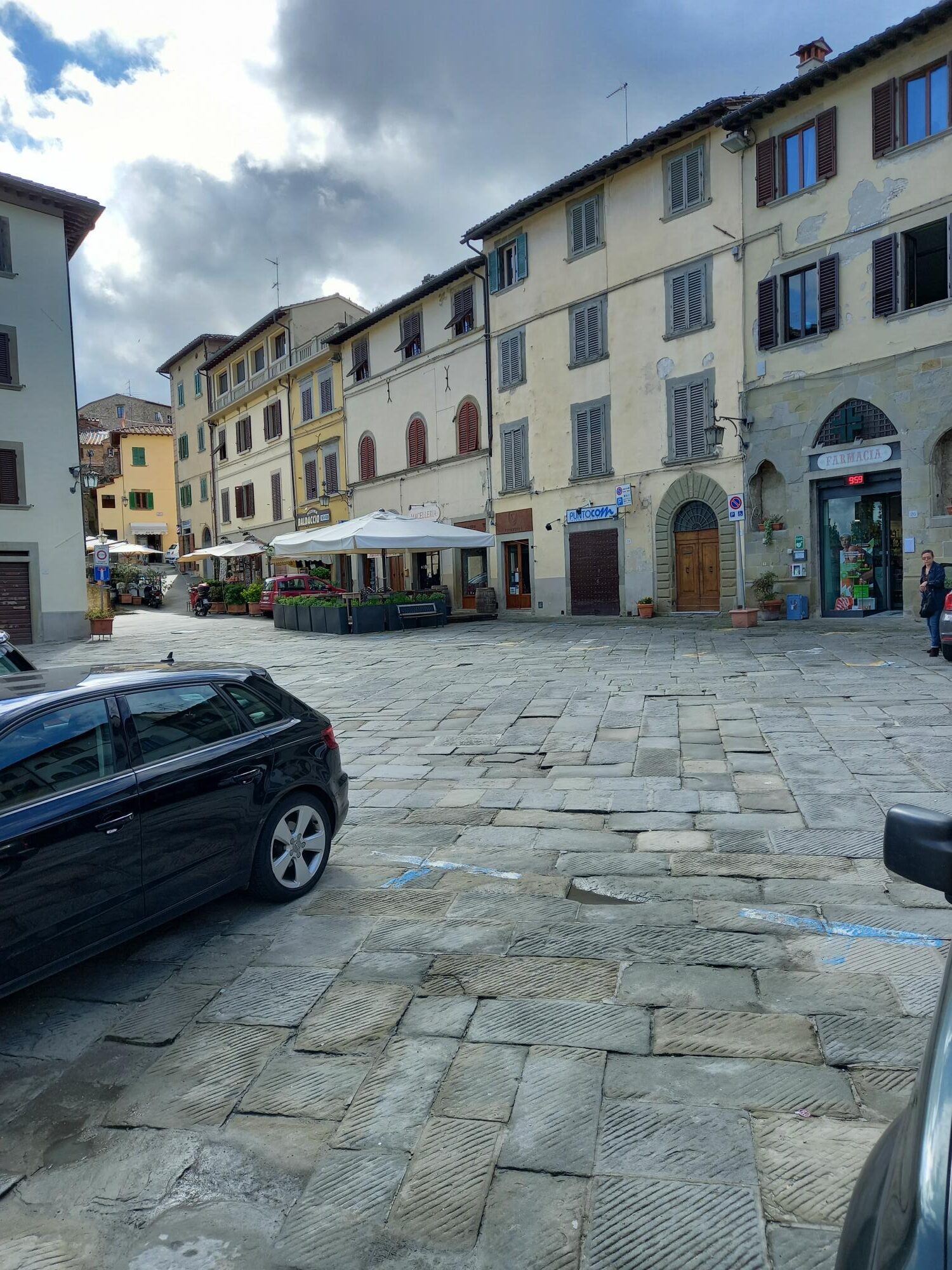
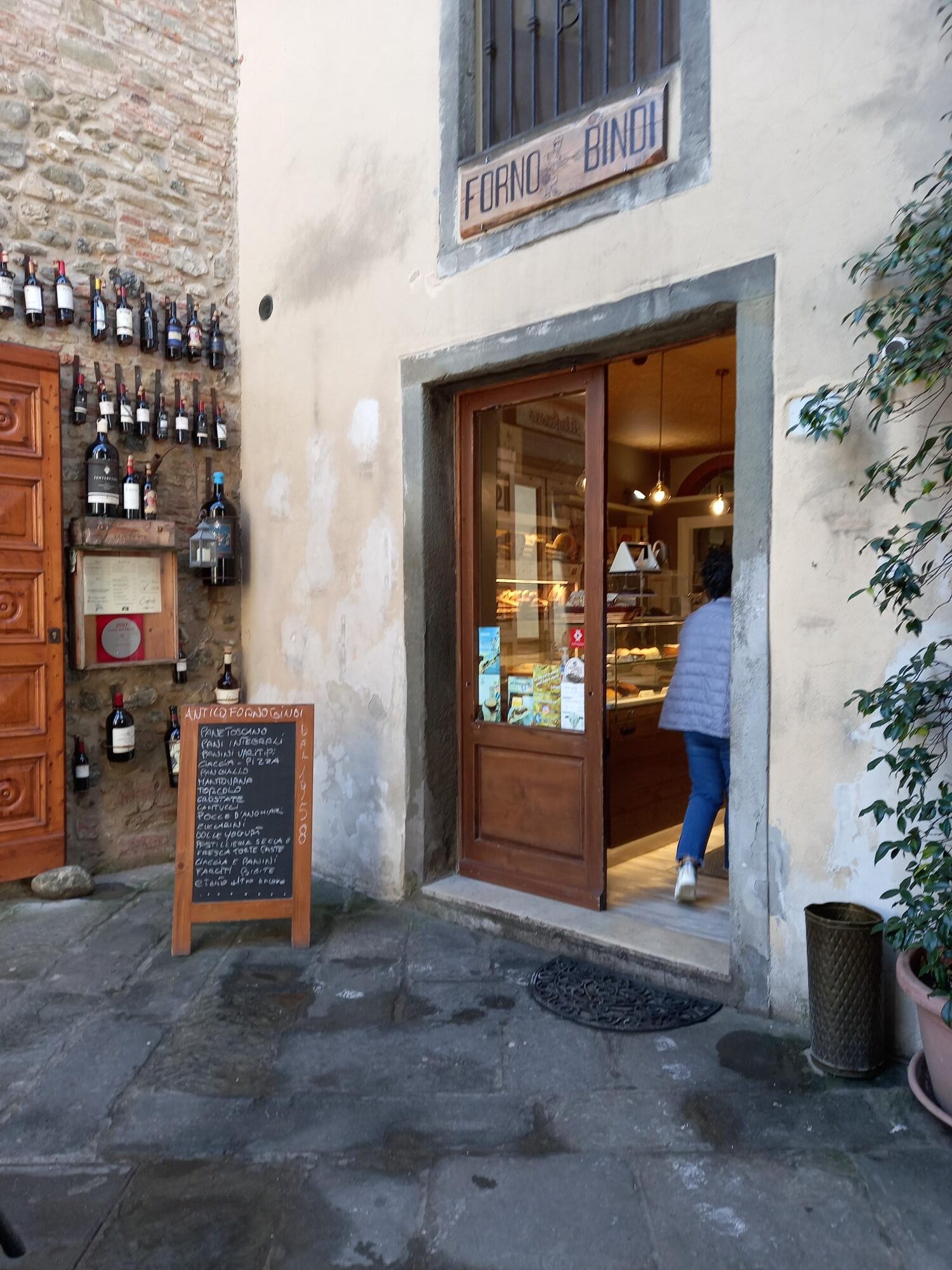
Angela attributes part of the decline in numbers of her particular everyday customers to the decline in newspaper readership. What particularly concerns her is the loss in the art of slow reading and reflection that has come with the digital world. From the books in her shop, it is evident that Angela has a love of literature. Some years ago, when I bought a volume of Quasimodo’s poetry from her, she showed me her favourite poems. Last year, Vittoria, my Italian teacher, and I had much pleasure reading this book together. For me, Anghiari was present throughout our reading.
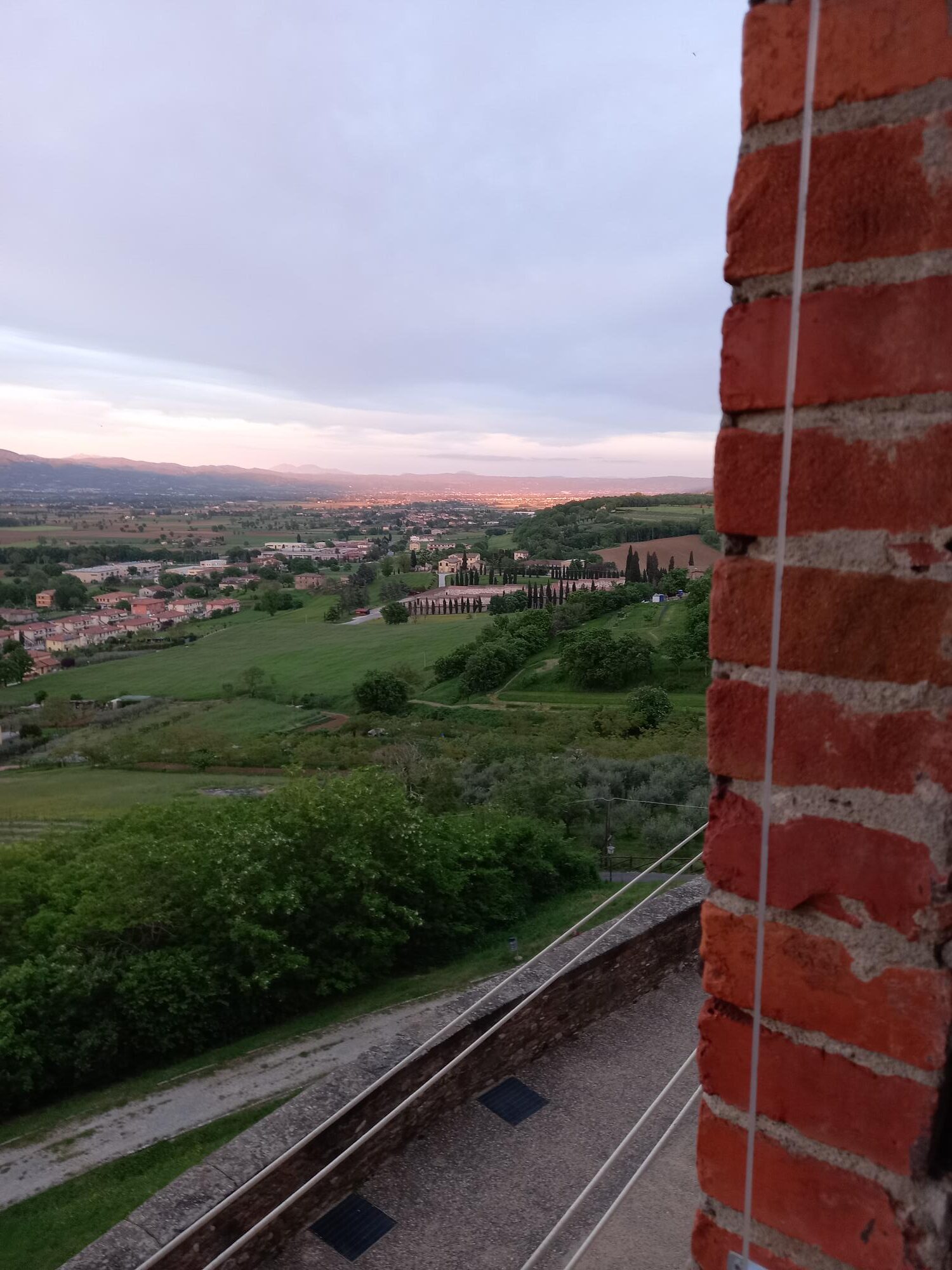
While I am writing this, there is a constant to and fro of swallows in front of the window. I watch the changing skies and lights, fascinated by the view of the valley and the Apennines beyond and around, and the complex, layered history all this holds. Here is sunset on my day of arrival.
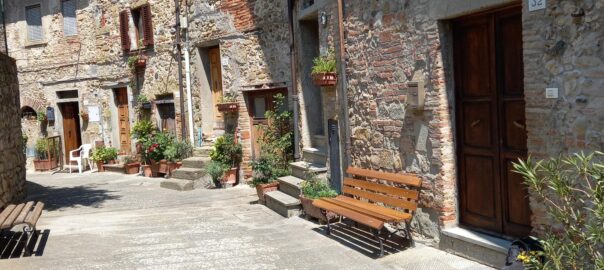
How wonderfu! It was a joy to wake up on a cold wet morning in WA and read about your return to Anghiari.